One of the most delicious wild mushrooms I know of, the shaggy parasol mushroom (Chlorophyllum rhacodes) looks like something from a fairy tale. The catch is that they're an intermediate-level species, with a nasty doppleganger you'll need to learn. It took me about 5 years of hunting to find my first ones, but they're worth the effort it takes to identify them. Today we'll go over what you need to know.
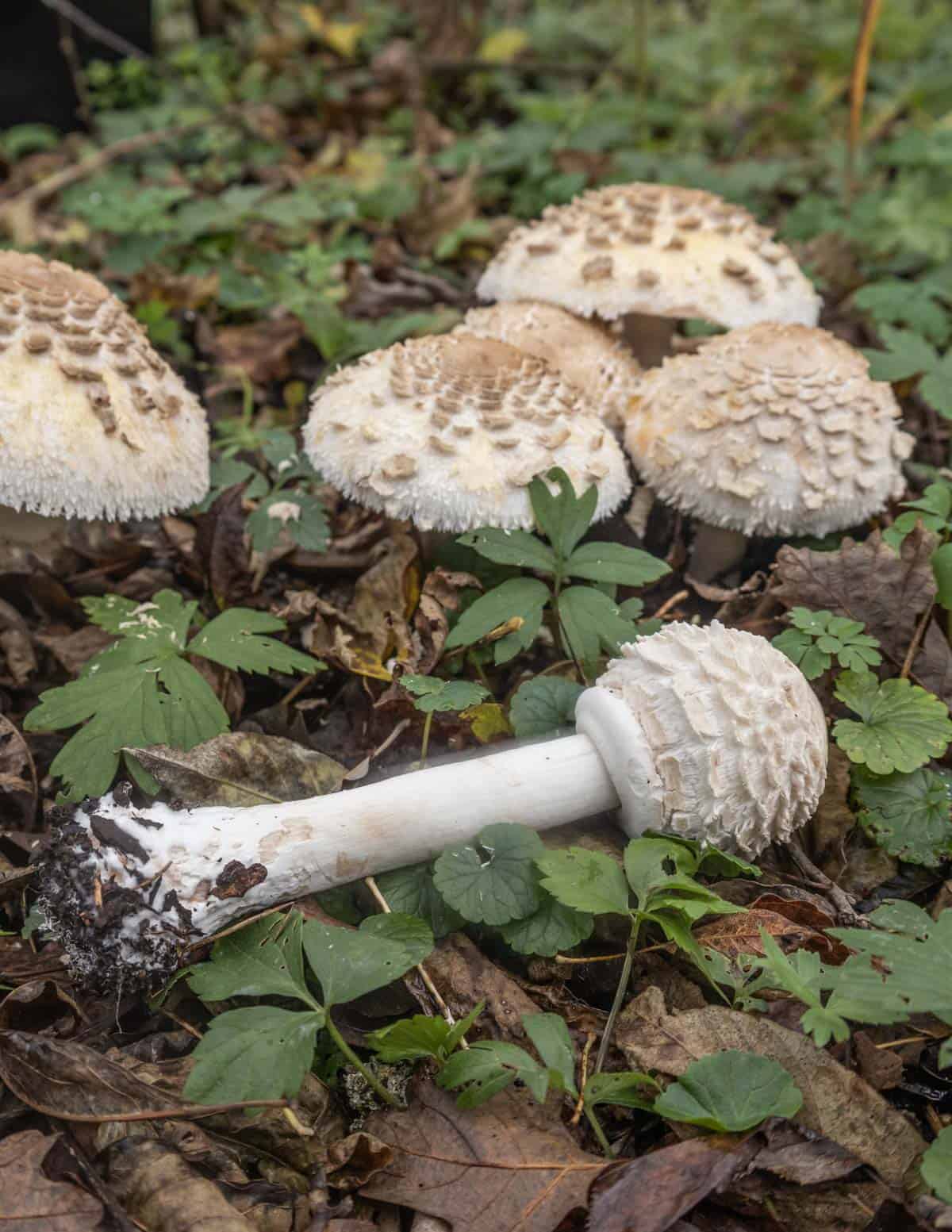
Long enjoyed in Europe, these are known as Mazze de Tamburo (drum sticks) in Italian. Just about any place they grow they're regarded as a prized edible, and I was surprised to see their cousin Macrolepiota procera, known as the Coulemelle (common parasol mushroom), or la Lépiote élevée (tall Lepiota) in markets for sale in Provence.
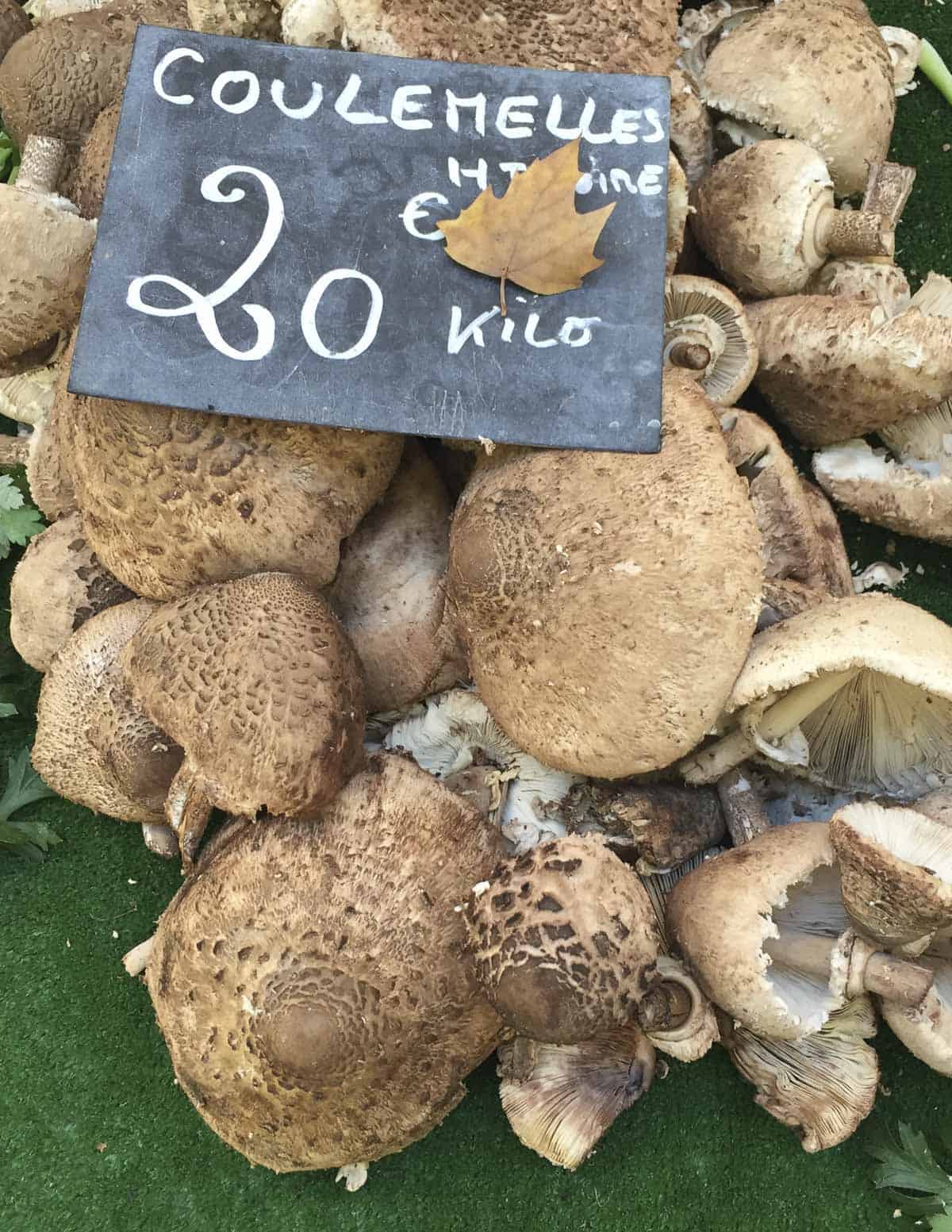
On a personal note, parasols eluded me for years until I got a few identification requests and tips from friends. Although often described as growing from spring to fall (and that could be true as they grow across North America) where I hunt in Minnesota and Wisconsin these are definitely a cold weather species. I don't usually check my spots until the nights are cold in Late September to October.

Their habitat is a bit confusing and variable as, unlike a lot prized mushrooms that grow in harmony with trees (mycorrhizal fungi) parasols are saprobic, meaning they feed off dead and decaying organic matter like Agaricus species or oyster mushrooms. Unlike oyster mushrooms, they never grow from wood and always grow from the ground.

Most mushroom field guides will state they're commonly found in disturbed areas, lawns and the edges of fields. While there's one patch I have along a popular parkway in Minneapolis, the best patch I know of is a clearing in deciduous maple-hickory woods where they grow next to honey mushrooms, aborted entolomas and puffballs.

They're also said to be common around conifers, particularly spruces, but I haven't seen that personally. I occasionally see them in large fairy rings as shown above, and it's breathtaking.
Shaggy Parasol Identification
Identification is important here as a similar-looking mushroom (C. molybdites, also known as the sickener or green-spored Lepiota) is responsible for plenty of mushroom poisonings each year around the world. Getting down to business, here's the characteristics of the shaggy parasol that stick out to me the most:

- The most important trait to know is that edible parasol mushrooms have white spores and the poisonous C. molybdites has green spores. You will need to see a few mature mushrooms with opened caps to check their spores as very young mushrooms can be nearly impossible to differentiate from each other.
- Besides the green spored C. Molybdites, you also need to be able to differentiate them from your local Amanitas, like the Amanita pantherina group. These can be more dangerous than C. Molybdites.
- Mature shaggy parasols I see will not have a broad, cone-like shape to their cap.
- The caps of edible shaggy parasols are covered with little bits of fluffy scales that will flake off as they mature. C. Molybdites doesn't typically have brown scales that are nearly as pronounced in my experience.
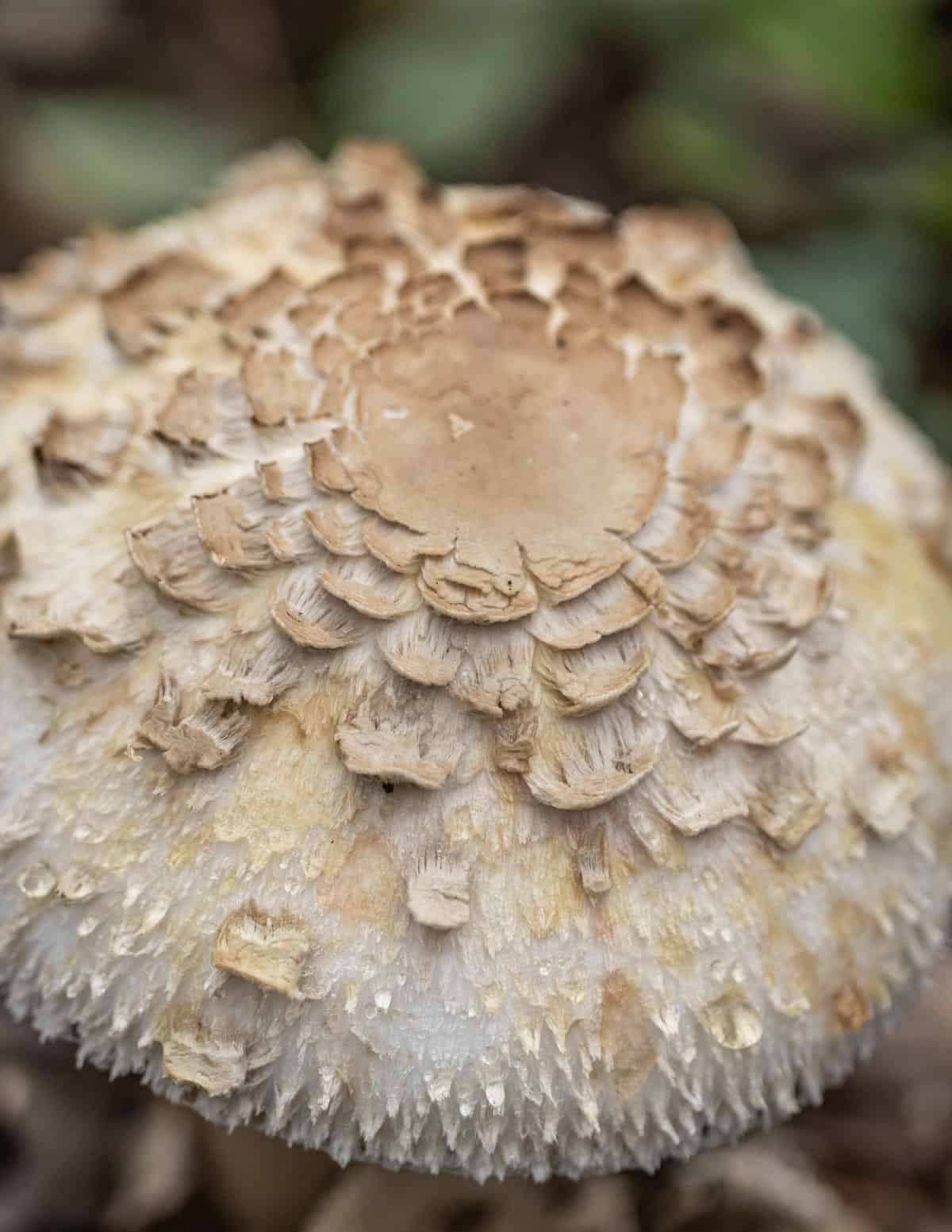
- The stems bruise a rusty orange-saffron color when sliced, typically more pronounced near the apex of the stem, which eventually turns to dark red. Unfortunately, C. molybdites can do this too, so checking the spores is still the best way to be sure of your identification.

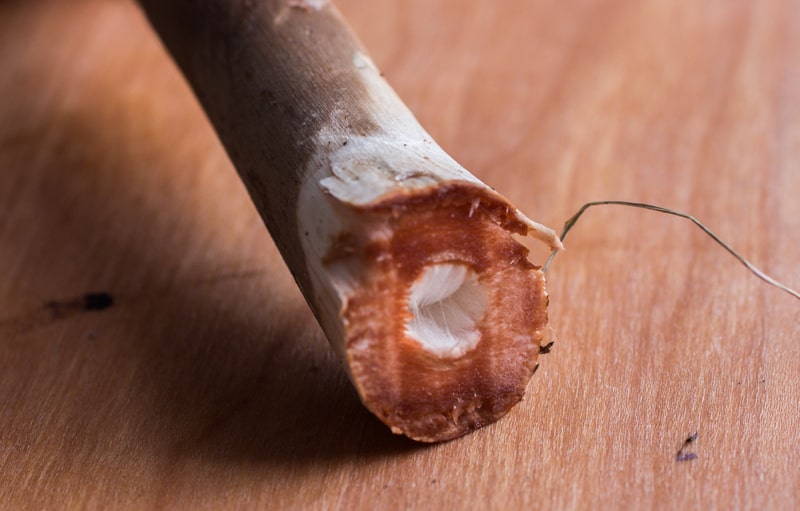
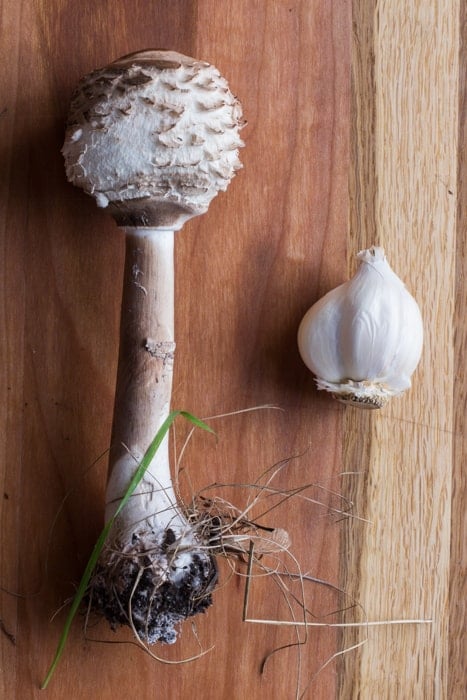
Look a-likes (False Parasol and Other)
The tricky part is that parasols have a nasty cousin that most people will have seen in yards: Chlorophyllum molybdites, also known as the vomiter, false parasol, and formerly as the green-spored Lepiota.
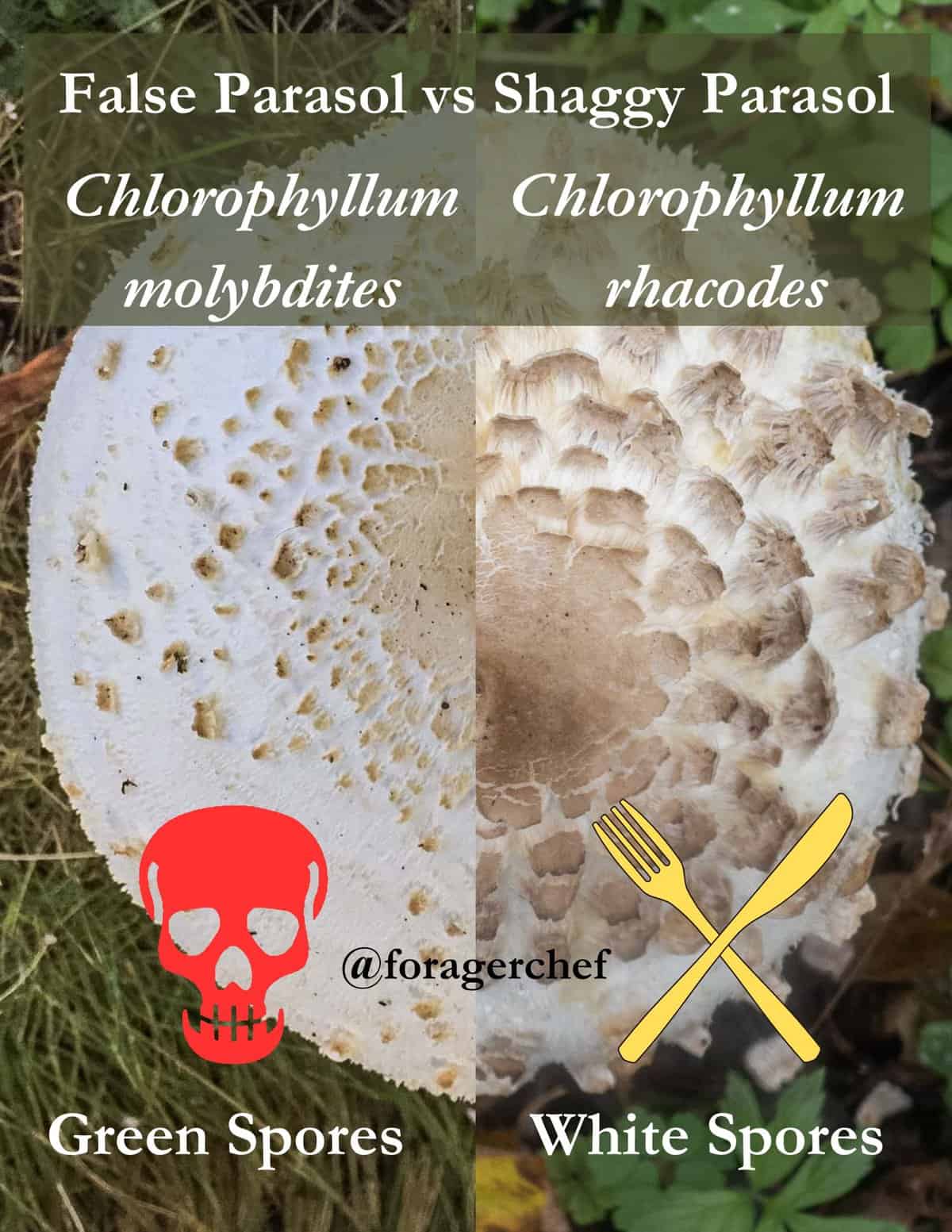
Molybdites is the dime-a-dozen, large parasol you see all over the place while true, edible parasols are more difficult to find, at least for me.

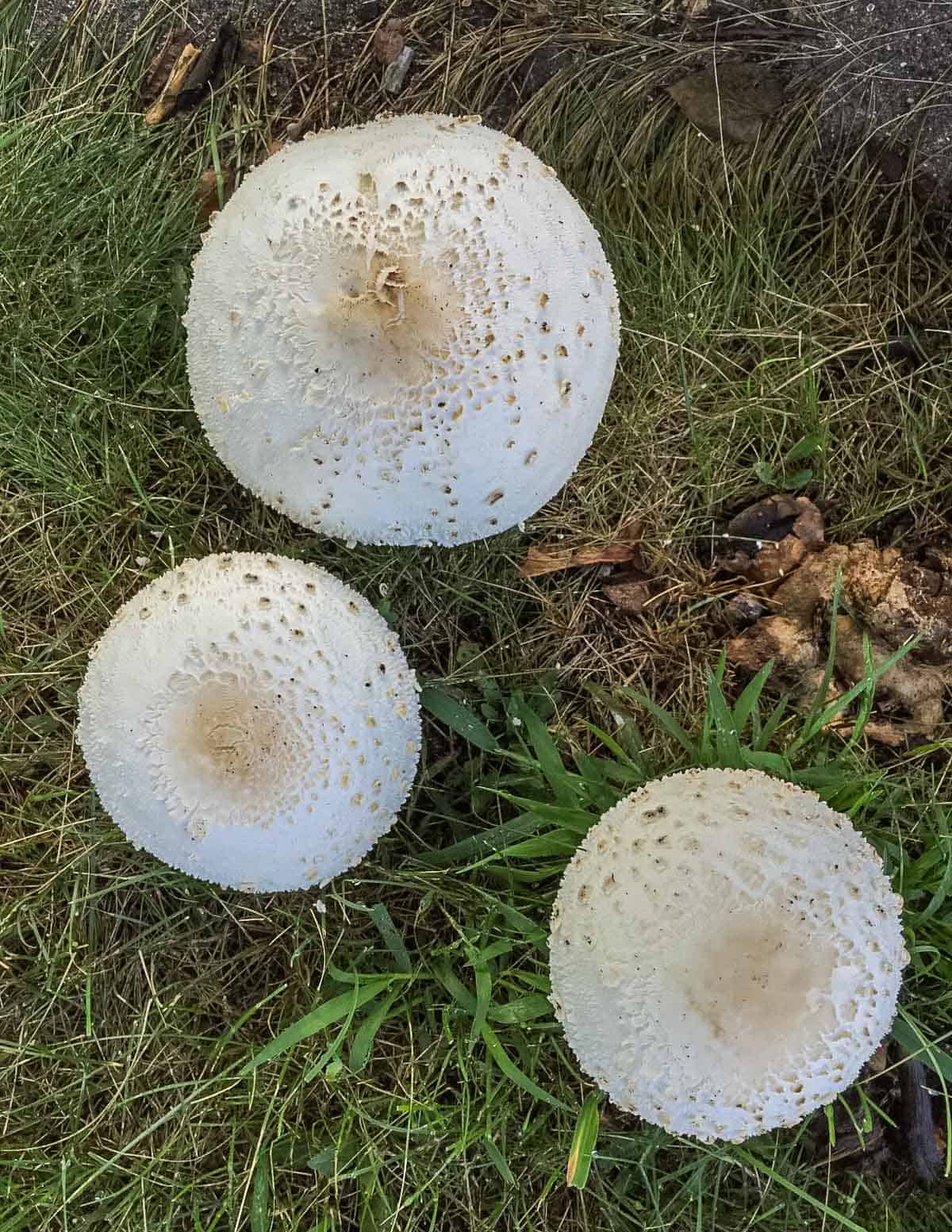
It's pretty much the poster child for online mushroom id questions, since people see them all over the place during mushroom season. One of my line cooks even brought some in once hoping to eat them. Showing him how to spore print and notice the green on gills of older mushrooms set him straight.

Molybdites is worth being afraid of too, it won't kill you, but It'll make you wish you were dead. Don't worry though, if you do your homework, there is nothing to be scared of.
However, these do take a little more work to snuff out than something "easy", like a chicken of the woods, so show them a little respect. If you're at all skeptical, toss them out until you're 110% sure of your identification.
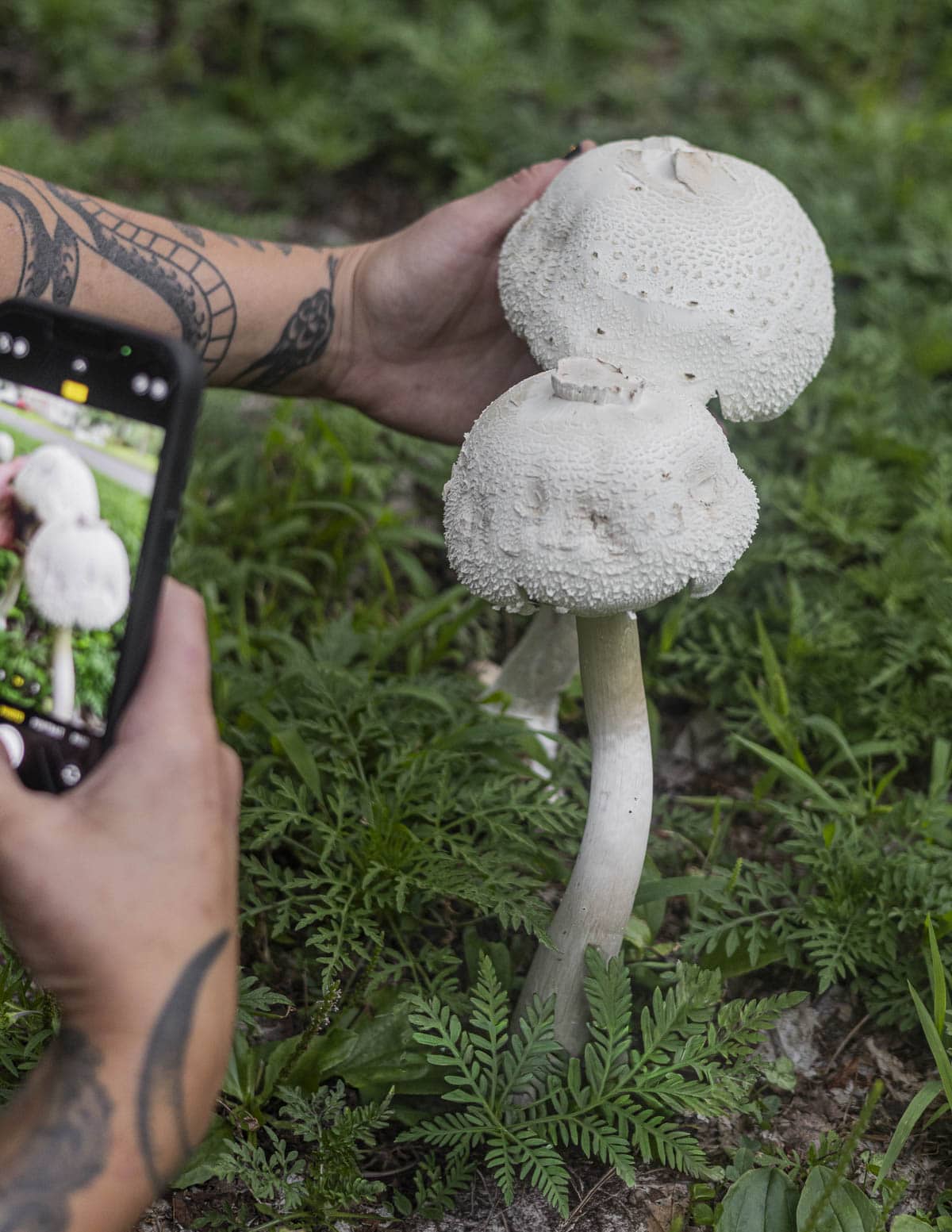
Lastly, besides the poisonous cousin, there's also two other, edible look alikes to mention that I haven't seen personally: Lepiota americana and Lepiota brunneum.
Individual Intolerance / Parasol Mushroom Allergy
Unfortunately, even if you come across some of these and they're true shaggy parasols, like morels, lobster mushrooms and chicken of the woods, some people will be intolerant to them, which is similar to an allergic reaction, causing general gastro-intestinal distress.
Don't let it stop you from sampling them, but remember to enjoy small amounts at first, and be careful who you serve them to unless they've already eaten them without issue.
General Cooking
These are one of the best wild mushrooms I know of, with a rich, meaty flavor I compare to Agaricus species I've tried like the meadow mushrooms, but with a deeper umami flavor. When slowly cooked and caramelized they're like eating a piece of meat.
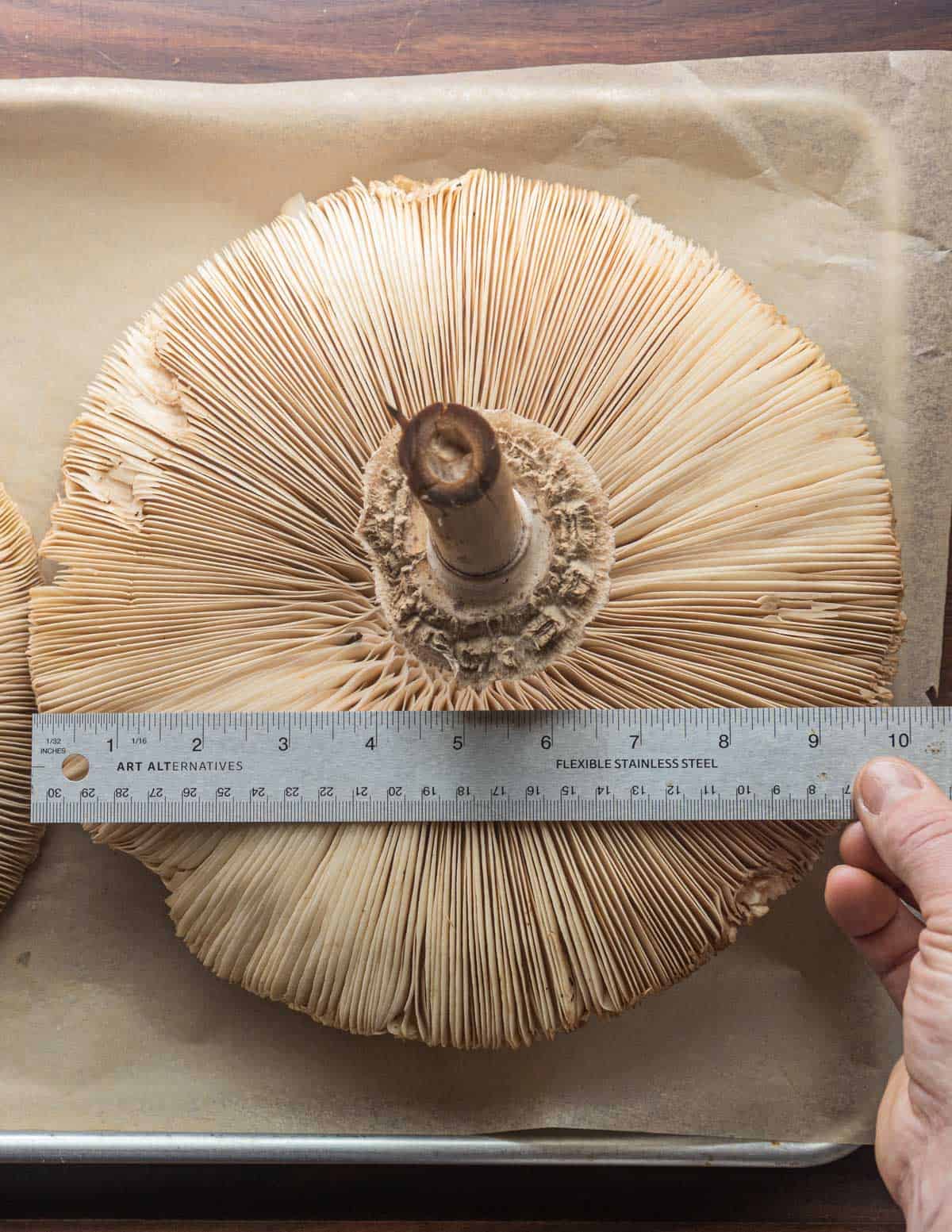
The first thing to take into consideration is the size of your mushrooms. I've picked enormous mushrooms with caps weighing nearly a pound each (see above) but more modest-sized mushrooms are what I typically see.
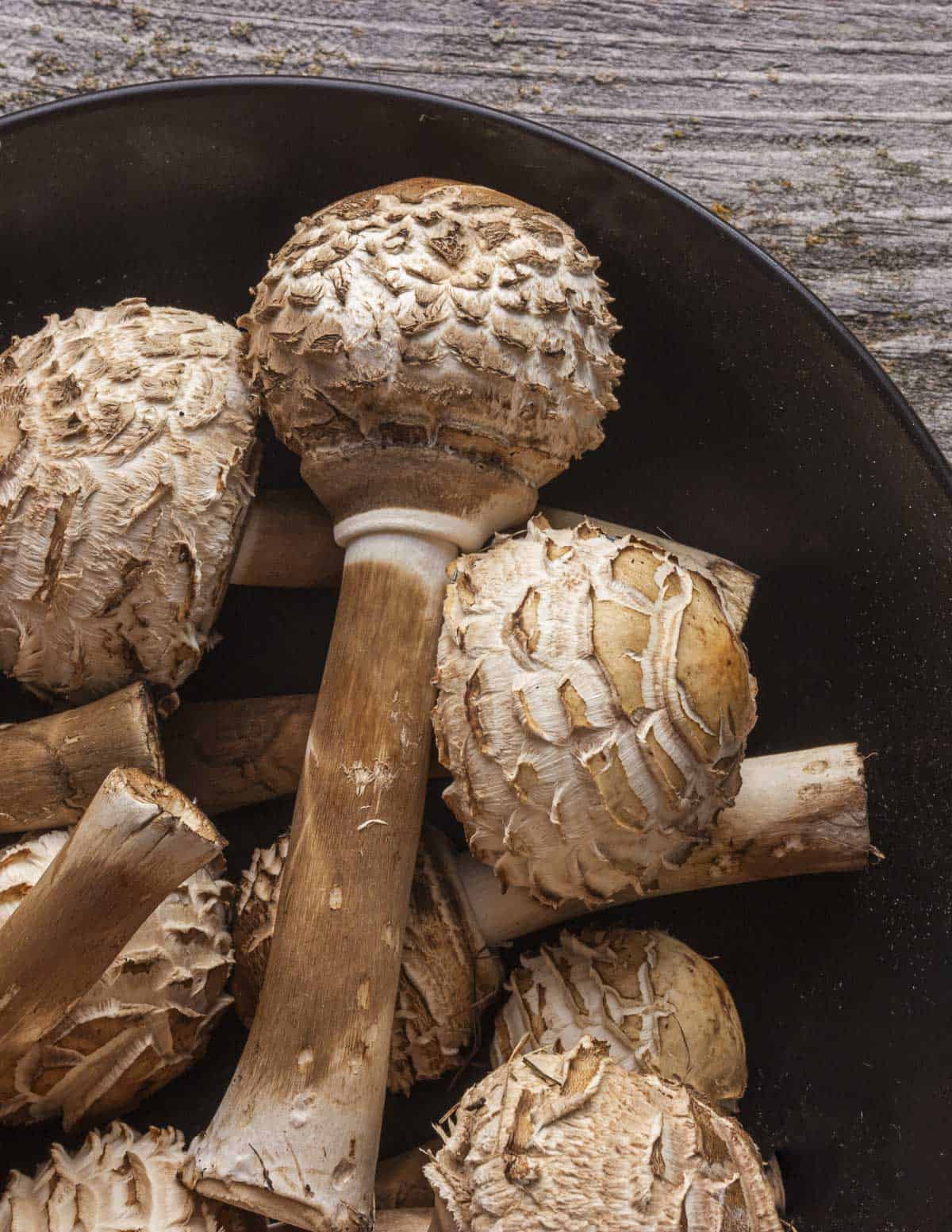
If you're lucky enough to find large ones you can remove the stems, bread and fry the caps for mushroom schnitzel, which is one way they're cooked in Germany. Breading and frying was the first thing I ever made with them, and I found out quickly the stems were pretty chewy, and I'd definitely remove them next time.

Just like Leccinum species, the stem is tougher than the cap and requires longer cooking. To get by this you can trim the stem down a few inches, or simply twist the stem off, then dice it, and cook it alongside the caps, or incorporate the cooked stem into a stuffing for the caps, which is another traditional way they're cooked.
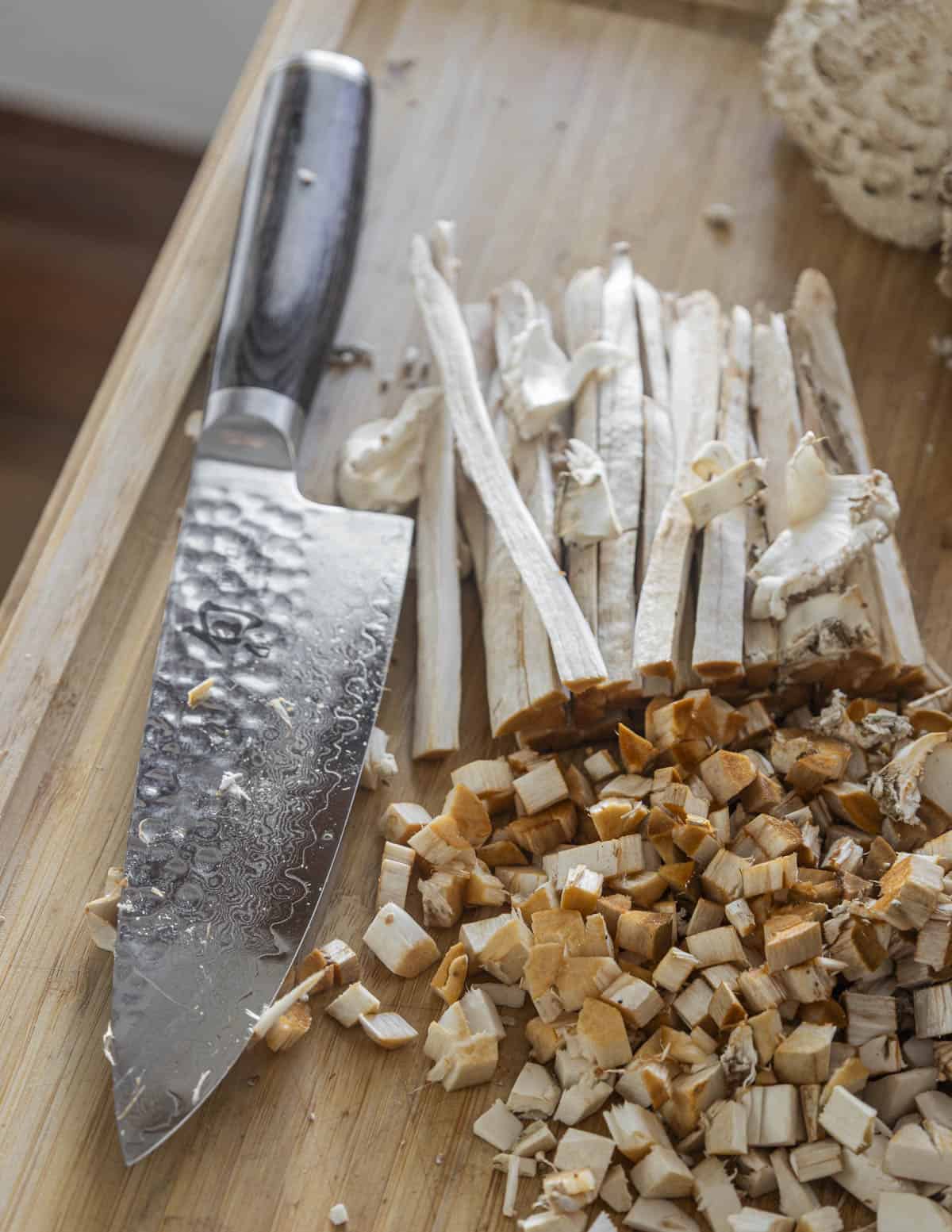
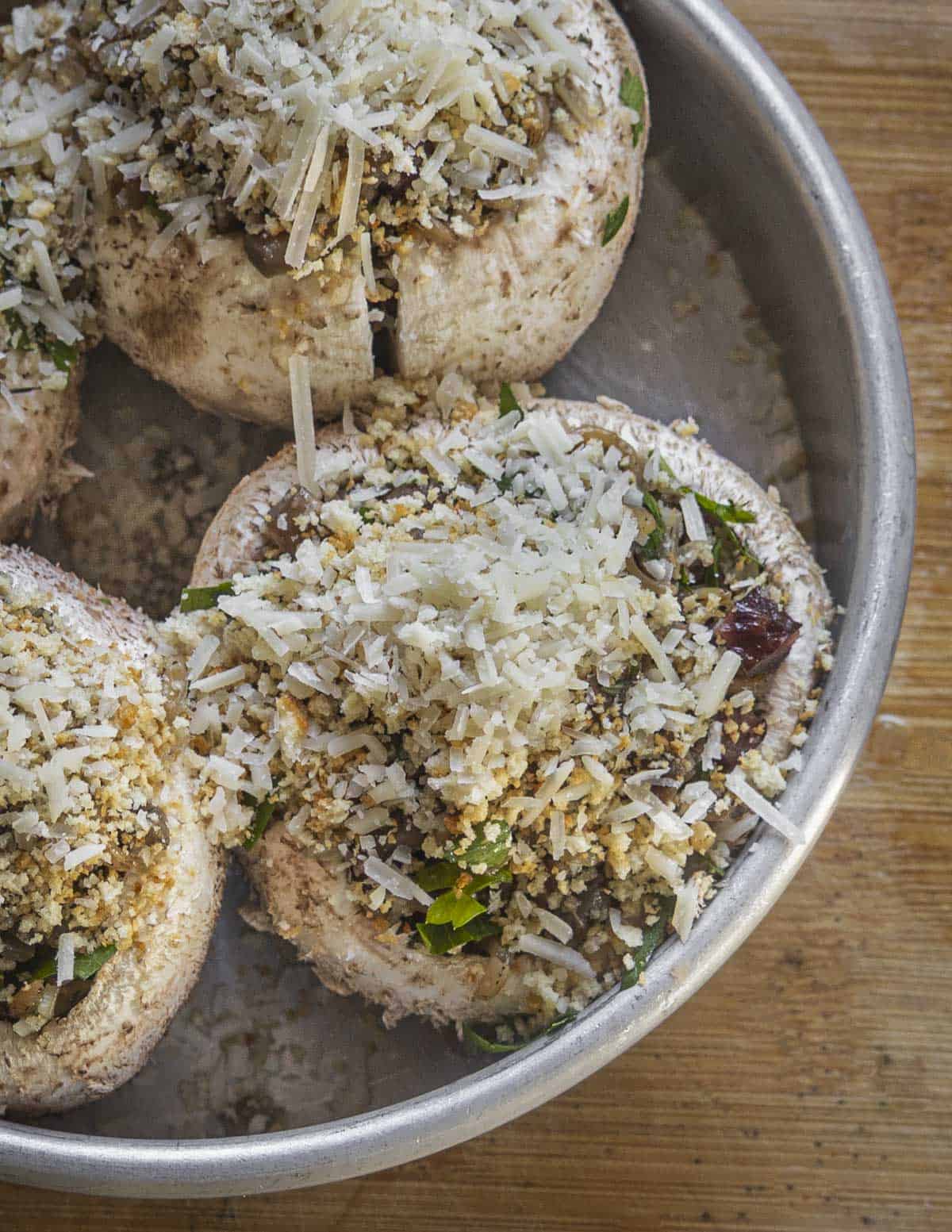
Besides stuffing, the caps can also be cooked whole. They can be alright like that, but it's difficult to brown round surfaces, and they should be pan roasted.

Finally, if I had to pick, the best thing I've made with them is cooking large pieces slowly in oil until deeply browned like the Italians do. The nutty, umami flavor is out of this world!
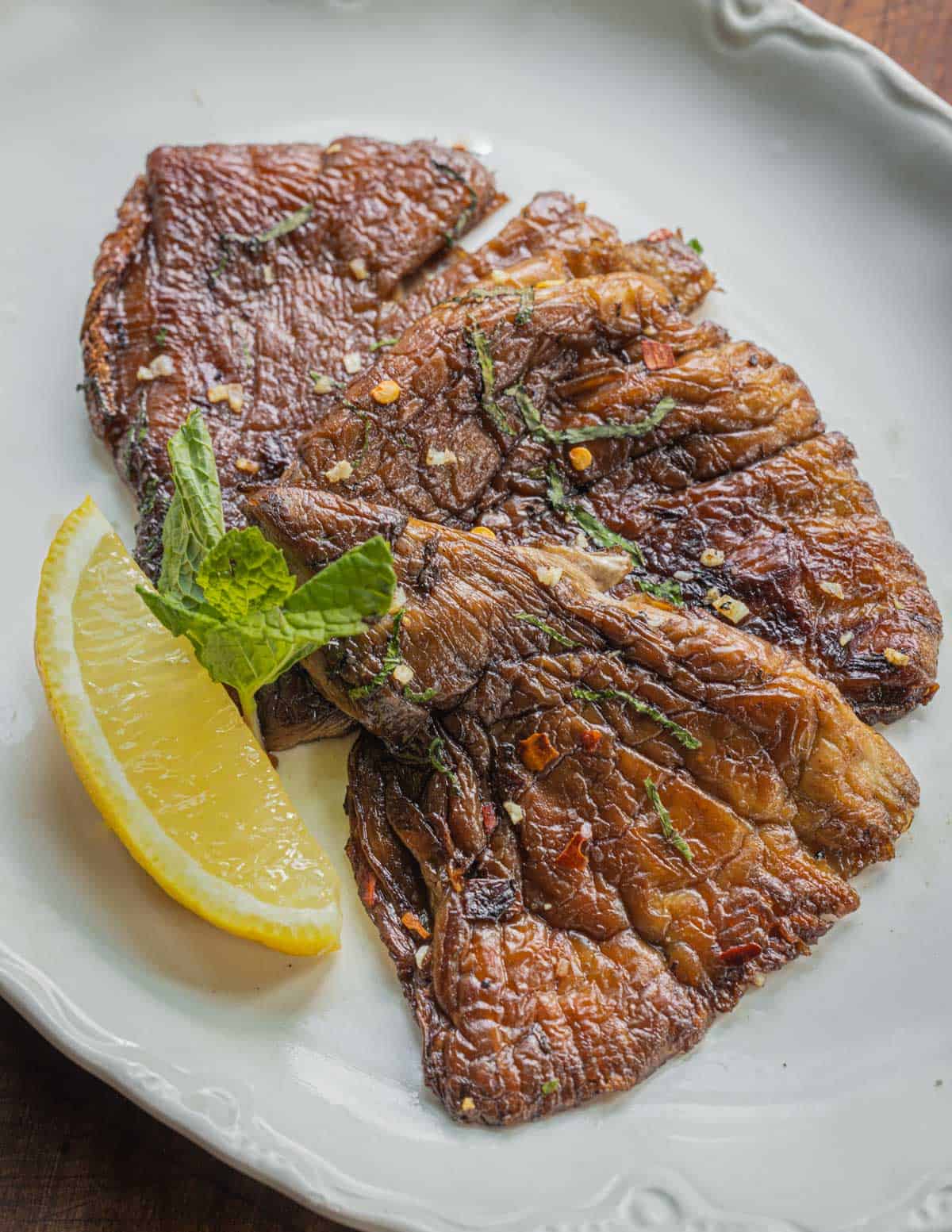
If you find yourself with an abundance of them, they also dry and rehydrate very well for soups and stews and aren't nearly as chewy as other species-perfect for a mushroom soup, sauce or duxelles. If you've ever had a dried portobello, button mushroom or other Agarics, they're very similar, just with a richer flavor.

More
Italian Fried Shaggy Parasols
Equipment
- 1 10 inch cast iron skillet
Ingredients
- 1 lb shaggy parasol mushrooms harvested before the caps open, brushed clean, stems peeled
- Fresh ground black pepper to taste
- Wedges of lemon to serve, (optional)
- ¼ cup light olive oil or cooking oil, as needed for frying the mushrooms
- ½ tsp kosher salt to taste
- 1 tsp minced garlic
- 1 tbsp fresh sliced mint leaves
- ¼ tsp crushed red pepper flakes
Instructions
- Cut the mushrooms into large pieces. Smaller mushrooms can be halved.
- Heat half the oil in a cast iron skillet or a wide saute pan on medium heat, when it's hot, place the mushrooms in the pan and cook slowly, flipping occasionally.
- If the mushrooms soak up the oil in the pan, add more oil and continue cooking. Take your time, flipping the mushrooms here and there until they're golden brown on both sides. Season with a pinch of salt half way through cooking.
- When the mushrooms are golden brown, push them to the side of the pan and add the garlic. Drag the mushrooms around in the garlic, flipping them to coat with the oil.
- Add the crushed red pepper and mint leaves, stir to combine. Taste a small piece of mushroom to test the flavor, adjust the seasoning for salt until they taste good to you, then serve with lemon wedges as a side dish.


Pixie
Hi Alan. On the subject of "thorough cooking" of this and other mushrooms that come with this safety warning, I feel a bit confused.
Self-trained, I've foraged and feasted on 61 different edibles. Because I work solo, I'm VERY careful with my IDs. You're my #1 resource for cooking techniques...making my experience so much more successful than I would be otherwise.
The only species I've ever had a gastric reaction to was COW. I couldn't believe it; I thought I had an iron stomach. I cooked it carefully and thoroughly. Or so I thought. Now I'm not so sure. It made me wonder if I'm one of the "sensitive types" or if I should have cooked it even longer.
I HAVE A REQUEST: In your posts and videos, I would find it especially helpful if you could comment more specifically about length of cooking time for species that come with this caution. My humbling COW experience has eroded a bit of my confidence.
Thanks again for your amazing website. It greatly enriches my mushrooming experience...and, therefore, my everyday life.
Alan Bergo
Hi Pixie. The vast majority of edibles in my region I’ve already covered, and when there are mushrooms with a known history of intolerance documented enough to warrant caution I make a point of mentioning it. The tricky thing is that we could go through every mushroom I’ve written about on this site and find people who have a natural intolerance to every single one. The other day I saw someone get sick from boiled elm oysters on FB. Going through and amending previous videos simply isn’t a practical option as I’d have to re-upload every video. I’m still just one person managing thousands of posts across many platforms, while writing a new book, of which I’m harvesting, cooking, developing the recipes, styling and photographing everything myself. So, for all intents and purposes, unless I mention the mushroom can be consumed raw you should always assume they should be well cooked.
Pixie
That wasn't what I meant...sorry if you misunderstood. Your website is the best! Good luck with your workload.
Alan Bergo
OH it's fine I totally get it, just explaining my reasoning here. Should've used some emojis 🙂
Pixie
Hi Alan. On the subject of "thorough cooking" of this and other mushrooms that come with this safety warning, I feel a bit confused.
Self-trained, I've foraged and feasted on 61 different edibles. Because I work solo, I'm VERY careful with my IDs. You're my #1 resource for cooking techniques...making my experience so much more successful than I would be otherwise.
The only species I've ever had a gastric reaction to was COW. I couldn't beleive it; I thought I had an iron stomach. I cooked it carefully and thoroughly. Or so I thought. Now I'm not so sure. It made me wonder if I'm one of the "sensitive types" or if I should have cooked it even longer.
I HAVE A REQUEST: In your posts and videos, I would find it especially helpful if you could comment more specifically about length of cooking time for species that come with this caution. My humbling COW experience has eroded a bit of my confidence.
Thanks again for your amazing website. It greatly enriches my mushrooming experience...and, therefore, my everyday life.
Carla Beaudet
I have not found C. rhacodes in WV, but I do occasionally find (Macro)lepiota procera. When we were in Italy with Britt Bunyard, we found staggering numbers of Macrolepiota procera in the San Rossore pine reserve, and they are EXACT ringers for the smaller ones I find at home (or perhaps the other way 'round?). But macro they are; I was wearing the open cap of one for a hat for a while. Our hosts fried some of the caps in EVOO but lightly breaded with crumbs and parmesan, with just a coating of more EVOO to make the crumbs stick. I like the simplicity of your recipe. I brought home a bunch of dried caps, and have been thinking about what might be done with them.
Alan Bergo
Sound a lot better than my last trip to Tuscany. The only mushroom I found was B. satanus. Britt sounds like such a character, I’m sure we’ll connect sometime.
The recipe is crazy good but takes a while. It’s hard to describe, leathery but supple and tender. Crazy umami.
Tammie
Thank you. Loved considering all this info. I enjoyed my first ones last year that grew in a neighbors yard.
The first photo in your video reminds me that I want to buy your calendar! It looks wonderful.
Alan Bergo
Hey thanks! I’d get it soon as they only did one printing.
Debbie Viess
Some people cannot eat any Chlorophyllum species, regardless of cooking time. Others seem to be able to eat even C. molybdites, with sufficient cooking. My husband and I both ate the same well cooked Chlorophyllum dish, prepared by a friend (no question about the exact species; the friend who prepared it is a top CA taxonomist!). We both had modest amounts. I enjoyed it, my poor husband hugged that porcelin throne for many hours!
Lots of individual variation in edibility with this genus. It's definitely one to view with caution.
They sure are pretty and distinctive, though!
Alan Bergo
Thanks Debbie. This post is pretty old now and due for an update. This is a good reminder for me to get on that.
Vera
Awesome pics. You've helped me nail it. About to have shaggy magic in Colorado.
Alan Bergo
Hey thanks. Once you know it it’s easy, but this can be a tricky one.
Rena Johnson
Have been collecting and eating these for a number of years here in Western Montana - they are awesome just sauteed in butter, and freeze well (after cooking) in waxed paper in a zip lock. What I don't do: keep them in the refrigerator after cooking. My absolute favorite mushroom!!
Dave Oshana
Has anyone been advised to "pre-boil before cooking"? One Finnish mushroom book recommends boiling *before* cooking "Akansieni", which it classifies as Chlorophyllum Olivieri, whilst a second book classifies as Chlorophyllum Rhacodes. In contrast, English websites and videos advise simply chopping the raw mushroom before frying it. One website even advises against using excessive water when cleaning the Shaggy Parasol, in case the meaty taste is washed away.
Gavin Lyons
Parasols are certainly one my favorites to eat around this time of year here in Austria. Recently I found a use for the stems which might interest you. I'm attempting to make Anthotype photography from the Parasol stems - https://gavinlyons.photography/preparing-mushrooms-for-anthotypes-part-ii/
Btw you also inspired me to try out a spore print too. At some point I hope to make one of those Saffron Milkcup recipes once I find enough fresh samples in our woods.
Natalie Serna
Can I send you a picture of some I picked today growing in the grass where I live?
Alan Bergo
Sure, but don't be expecting me to ID them 100%. Facebook groups are great for posting with ID requests. alanbergo3 AT gmail.com
Iryna
We have collected a large quantity for the first time. We followed all the identification tips and got convinced it was the edible one. We cooked it thou roughly and gave it a try. We ate a little the first time, and we're fine. Then I cooked with them and we were still fine. A week later I still had a lot left, so I decided to cook them all up and had a large portion for dinner. I am sick as a dog now!!! Can the quantity really make you sick?
Alan Bergo
I have never gorged myself on shaggy parasols, but I know David Arora definitely talks about many cases of mushroom "poisoning" being from over-consumption. Sorry to hear, my girlfriend ate a dish I made with lobster mushrooms that was hanging out in her fridge for a few days too long and got very sick last year. I know mushroom gastro-intestinal distress is absolutely horrible, sorry to hear, but I hope you'll be able to hunt more next year, don't let a little sickness deter you from having fun.
Will K.
I’ve never come across Lepiota rachodes here in VA, but I regularly collect and eat L. Americana and Macrolepiota procera (Macrolepiota procera is one of my favorites; the huge caps are awesome stuffed with an Italian sausage-based stuffing). To me, the L. rachodes looks far more likely to be confused with Chlorophyllum molybdites than the other two large Lepiotas, at least visually. Great blog, BTW!
Alan Bergo
Thanks.
nancy elder
p.s. love your site!
nancy elder
If you've never eaten this mushroom, go slow. First time I ate it mixed in with other species and got sick. Couldn't believe it was the Lepiota rachodes (old name) since It was the emblem of the L.A. Mycological Society. So, I ate it again . . .and yes sick again. I've been collecting and eating mushrooms for over 40 years and it's the only common edible I can't eat.